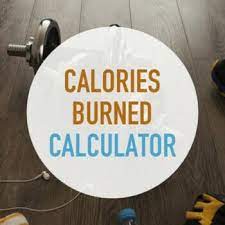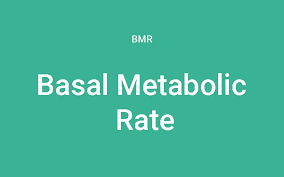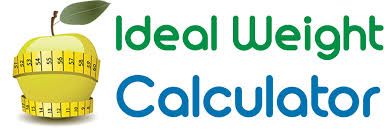Are you looking to optimize your fitness journey and take control of your calorie expenditure? Look no further! In this article, we’ll introduce you a powerful tool workout calories burned calculator or calories burned activity calculator. These invaluable resources provide personalized calorie burn estimates based on factors such as body weight, exercise type, intensity, and duration. Whether you’re focused on specific exercises or tracking daily activities, these calculators are the perfect companions for achieving your health and fitness goals.
Calories Burned Calculator
Energy Burned in Kcal:
Energy Burned per Hour:
[ez-toc]
How to Calculate the Calories You Burn During Exercise
Are you trying to lose weight, maintain your current shape, or simply stay on top of your fitness game? Then understanding how to calculate the calories you burn during exercise is crucial. This knowledge helps you make informed decisions about your workout routine and adjust your diet accordingly. In this comprehensive guide, we'll walk you through the process of calculating the calories burned during exercise, taking into account factors such as your weight, activity type, and workout duration.
Understand the Basic Principles of Calorie Burning
Before diving into the calculations, it's essential to grasp some fundamental concepts related to calorie burning:
- Calorie: A unit of energy that your body uses to perform daily activities and maintain its vital functions.
- Basal Metabolic Rate (BMR): The number of calories your body burns at rest to keep you alive and functioning.
- Exercise: Any physical activity that increases your heart rate and requires your muscles to work harder than they do at rest.
Choose the Right Formula for Your Exercise
There are various formulas available to calculate the calories burned during exercise. The most common and widely accepted methods include the Metabolic Equivalent of Task (MET) and the Harris-Benedict Equation. These formulas take into account factors such as your age, weight, height, and the intensity of your workout.
- MET: Metabolic Equivalent of Task represents the energy cost of physical activities. One MET is equivalent to the energy expenditure at rest. You can find MET values for different exercises in the Compendium of Physical Activities.
Calorie Burned = MET value x Weight (kg) x Duration (hours)
- Harris-Benedict Equation: This formula calculates your BMR and then adjusts it for your physical activity level.
BMR (Men) = 88.362 + (13.397 x Weight in kg) + (4.799 x Height in cm) - (5.677 x Age in years) BMR (Women) = 447.593 + (9.247 x Weight in kg) + (3.098 x Height in cm) - (4.330 x Age in years)
Total Daily Energy Expenditure (TDEE) = BMR x Activity Factor
Determine the Intensity of Your Workout
The intensity of your workout significantly impacts the number of calories burned during exercise. In general, the higher the intensity, the more calories you'll burn. You can use a heart rate monitor or a perceived exertion scale to gauge the intensity of your workout.
Track Your Progress and Adjust Accordingly
Regularly monitoring your progress will help you stay on track and make necessary adjustments to your fitness routine and diet. Keep a workout log, use fitness apps, or invest in a smartwatch to track your exercise data and calculate the calories you burn during exercise.
Consult a Professional if Necessary
If you're unsure about the accuracy of your calculations or need personalized advice, consult a certified personal trainer, dietitian, or healthcare professional. They can provide tailored guidance based on your unique needs and goals.
Understanding how to calculate the calories you burn during exercise is a valuable skill for anyone looking to improve their fitness or manage their weight. By using formulas like MET or the Harris-Benedict Equation, considering the intensity of your workout, and monitoring your progress, you'll be well-equipped to make informed decisions about your exercise routine and diet. Remember to consult a professional if you need personalized guidance, and always listen to your body to ensure a safe and effective fitness journey.
Calories Burned for Common Exercises,Sports and Activities
Understanding the calories burned during different exercises, sports, and activities is essential for anyone looking to optimize their fitness routine or manage their weight. In this comprehensive breakdown, we'll provide you with the calorie expenditure for various popular exercises, sports, and activities, considering factors such as intensity and duration. Use this information to make informed decisions about your workout routine and tailor it to your personal goals.
- Aerobic Exercises
Aerobic exercises, also known as cardiovascular exercises, are activities that increase your heart rate and breathing. These exercises are great for burning calories and improving your overall cardiovascular health. Some common aerobic exercises and their calorie expenditure per 30 minutes (for a 150-pound person) include:
- Walking (3 mph): 150 calories
- Running (6 mph): 450 calories
- Cycling (12 mph): 300 calories
- Jumping rope: 350 calories
- Swimming (laps): 300 calories
- Strength Training
Strength training exercises focus on building muscle and increasing your overall strength. While these exercises might not burn as many calories as aerobic exercises, they're essential for overall fitness and weight management. Some popular strength training exercises and their calorie expenditure per 30 minutes (for a 150-pound person) include:
- Weightlifting (moderate effort): 200 calories
- Bodyweight exercises (e.g., push-ups, squats, lunges): 225 calories
- Resistance training (e.g., resistance bands, machines): 225 calories
- Group Fitness Classes
Group fitness classes are a fun and engaging way to burn calories and stay motivated. These classes often combine various types of exercises to target different muscle groups and keep you entertained. Some popular group fitness classes and their calorie expenditure per 30 minutes (for a 150-pound person) include:
- Zumba: 350 calories
- Pilates: 150 calories
- Yoga (Hatha): 150 calories
- High-Intensity Interval Training (HIIT): 400 calories
- Sports and Recreational Activities
Playing sports and participating in recreational activities is a fun way to burn calories while socializing and staying active. Here are some popular sports and recreational activities and their calorie expenditure per 30 minutes (for a 150-pound person):
- Basketball: 300 calories
- Tennis (singles): 300 calories
- Soccer: 300 calories
- Golf (walking and carrying clubs): 200 calories
- Dancing (social): 200 calories
- Everyday Activities
Even daily activities such as cleaning, gardening, and playing with your kids can help you burn calories. Here are some common everyday activities and their calorie expenditure per 30 minutes (for a 150-pound person):
- Vacuuming: 125 calories
- Gardening: 200 calories
- Playing with kids (moderate effort): 150 calories
- Walking the dog: 125 calories
workout calories burned calculator can be used to know your fitness level.
What Exercise Burns the Most Calories?
When it comes to losing weight and improving fitness, finding the exercises that burn the most calories is crucial. The more calories you burn, the easier it is to create a calorie deficit and shed those extra pounds. In this comprehensive guide, we'll explore the top calorie-torching exercises and provide practical tips to help you incorporate them into your fitness routine.
- Running
Running is one of the most effective exercises for burning calories, as it engages your entire body and requires minimal equipment. The faster you run, the more calories you'll burn. For instance, a 150-pound person can burn approximately 450 calories in 30 minutes running at a 6 mph pace.
Tips for running:
- Start slow and gradually increase your pace and distance.
- Invest in a good pair of running shoes to prevent injuries.
- Incorporate interval training, such as alternating between sprinting and jogging, to boost calorie burn.
- Jumping Rope
Jumping rope is a full-body workout that helps improve cardiovascular health and coordination while torching calories. A 150-pound person can burn around 350 calories in 30 minutes of jumping rope.
Tips for jumping rope:
- Choose a rope with the right length for your height.
- Start with short intervals and gradually increase the duration.
- Incorporate variations, such as double unders or high knees, to keep the workout challenging and engaging.
- High-Intensity Interval Training (HIIT)
HIIT workouts involve short bursts of intense exercise followed by brief recovery periods. This training method can burn a significant amount of calories in a short time. A 150-pound person can burn approximately 400 calories in 30 minutes of HIIT.
Tips for HIIT:
- Warm up before starting your HIIT workout.
- Choose exercises that target different muscle groups to maximize calorie burn.
- Start with shorter intervals and gradually increase the intensity and duration.
- Swimming
Swimming is a low-impact, full-body workout that's great for burning calories and toning muscles. A 150-pound person can burn around 300 calories in 30 minutes of swimming laps.
Tips for swimming:
- Choose a stroke that's comfortable for you, such as freestyle, breaststroke, or backstroke.
- Incorporate interval training, like alternating between fast and slow laps, to boost calorie burn.
- Make sure to warm up and stretch before and after swimming to prevent injuries.
- Cycling
Cycling, whether outdoors or on a stationary bike, is an effective way to burn calories while improving cardiovascular health and strengthening your lower body. A 150-pound person can burn about 300 calories in 30 minutes of cycling at a moderate pace (12 mph).
Tips for cycling:
- Adjust your bike seat and handlebars for proper fit and comfort.
- Increase your pace or resistance for a more challenging workout.
- Try group cycling classes or explore new routes to keep your workouts fresh and exciting.
The most calorie-burning exercises include running, jumping rope, HIIT, swimming, and cycling. By incorporating these workouts into your fitness routine, you can optimize your weight loss journey and boost your overall fitness.
Calories burned activity calculator can be used to know Calories Burned.
How Activity Goes Far Beyond the Calories Burned
While many people focus on the calories burned during exercise as the main indicator of its effectiveness, the benefits of physical activity extend far beyond that. Exercise offers numerous advantages for overall health and well-being, from mental health improvements to disease prevention and increased longevity. In this comprehensive guide, we'll dive into the hidden benefits of exercise that go beyond calorie burning, shedding light on the true impact of physical activity on your life.
- Improved Mental Health
Physical activity has a profound impact on mental health, as it helps release endorphins – the feel-good hormones. Exercise has been shown to:
- Alleviate anxiety and depression
- Improve mood and emotional well-being
- Reduce stress and increase relaxation
- Enhance cognitive function and memory
- Disease Prevention
Regular exercise plays a crucial role in preventing various chronic diseases and health conditions. By staying active, you can:
- Reduce the risk of heart disease and stroke
- Improve insulin sensitivity, preventing type 2 diabetes
- Lower blood pressure and cholesterol levels
- Strengthen your immune system
- Increased Longevity
Engaging in regular physical activity has been linked to increased life expectancy. By incorporating exercise into your daily routine, you can:
- Add years to your life
- Improve overall quality of life
- Maintain independence and mobility as you age
- Enhanced Sleep Quality
Exercise can have a significant impact on the quality of your sleep, as it helps regulate your circadian rhythm and promote relaxation. By staying active, you can:
- Fall asleep faster
- Enjoy deeper, more restorative sleep
- Reduce the risk of sleep disorders, such as insomnia and sleep apnea
- Weight Management
While burning calories is an essential aspect of weight management, exercise also helps in other ways, such as:
- Increasing lean muscle mass, which boosts metabolism
- Enhancing fat oxidation, leading to more efficient fat burning
- Regulating appetite and reducing cravings
- Stronger Bones and Muscles
Physical activity, especially strength training and weight-bearing exercises, helps build and maintain strong bones and muscles. This, in turn, can:
- Prevent osteoporosis and bone fractures
- Improve balance and coordination, reducing the risk of falls
- Support daily activities and improve overall functional fitness
- Social Connection and Support
Group exercises, sports, and other physical activities can provide opportunities for social interaction, fostering connections, and support networks. This can lead to:
- Improved self-esteem and confidence
- A sense of belonging and camaraderie
- Increased motivation and accountability
The benefits of physical activity go far beyond the calories burned, encompassing improved mental health, disease prevention, increased longevity, enhanced sleep quality, weight management, stronger bones and muscles, and social connections. By understanding the true impact of exercise on your life, you can make more informed decisions about your fitness routine and appreciate the wide-ranging advantages it offers.
Calories burned in 30 minutes of leisure and routine activities
Incorporating physical activity into your daily routine doesn't have to mean hitting the gym or following a strict workout regimen. Many leisure and routine activities can help you burn calories and stay active. In this comprehensive overview, we'll provide you with the calorie expenditure for various popular leisure and routine activities, considering factors such as intensity and duration. Use this information to make informed decisions about your daily life and tailor it to your personal goals.
- Household Chores
Household chores can help you stay active while maintaining a clean and organized living space. Here are some common household chores and their calorie expenditure per 30 minutes (for a 150-pound person):
- Vacuuming: 125 calories
- Dusting: 100 calories
- Washing dishes: 80 calories
- Folding laundry: 70 calories
- Gardening and Yard Work
Gardening and yard work are not only great ways to burn calories but also help you connect with nature and improve your mental well-being. Some popular gardening and yard work activities and their calorie expenditure per 30 minutes (for a 150-pound person) include:
- Weeding: 150 calories
- Raking leaves: 150 calories
- Mowing the lawn (push mower): 200 calories
- Planting flowers or vegetables: 135 calories
- Leisurely Walking and Hiking
Going for a walk or a hike is an enjoyable way to burn calories, explore your surroundings, and boost your cardiovascular health. Here are some leisurely walking and hiking activities and their calorie expenditure per 30 minutes (for a 150-pound person):
- Walking (3 mph): 150 calories
- Hiking (cross-country): 225 calories
- Walking the dog: 125 calories
- Dancing
Dancing is a fun and engaging way to burn calories and stay active. It also offers numerous benefits for your mental and emotional well-being. Here are some popular dancing styles and their calorie expenditure per 30 minutes (for a 150-pound person):
- Ballroom dancing (slow): 110 calories
- Ballroom dancing (fast): 220 calories
- Salsa dancing: 200 calories
- Social dancing (e.g., at a party or club): 200 calories
- Recreational Sports and Activities
Participating in recreational sports and activities is an enjoyable way to burn calories, socialize, and stay active. Here are some popular recreational sports and activities and their calorie expenditure per 30 minutes (for a 150-pound person):
- Bowling: 100 calories
- Golf (walking and carrying clubs): 200 calories
- Frisbee: 100 calories
- Ping pong: 145 calories
By understanding the calories burned during various leisure and routine activities, you can optimize your daily life and make informed decisions about your weight management journey. Keep in mind that the calorie expenditure provided in this article is based on a 150-pound person, and individual results may vary. Engaging in these activities can help you stay active, improve your overall well-being, and maintain a healthy lifestyle.
BURN 500 CALORIES with 30-Minute Cardio Workout!
Are you looking to maximize your calorie burn in a short amount of time? Look no further! With this ultimate guide, we'll provide you with a 30-minute cardio workout that can help you burn 500 calories. Combining high-intensity exercises with short rest periods, this workout is designed to keep your heart rate elevated and your muscles engaged, ensuring maximum calorie burn. Let's dive in and explore this efficient and effective workout routine.
Preparation:
Before starting any workout, it's essential to warm up for at least 5-10 minutes to increase blood flow, loosen up your muscles, and prevent injuries. Consider incorporating dynamic stretches and light cardio movements, such as jumping jacks, high knees, and leg swings.
The 30-Minute, 500-Calorie Cardio Workout:
This workout consists of five high-intensity exercises that you'll perform for 45 seconds each, followed by a 15-second rest period. Complete three rounds of the circuit, with a one-minute rest between each round.
- Burpees
- Begin in a standing position with your feet shoulder-width apart.
- Bend your knees and lower your hands to the ground.
- Kick your feet back into a plank position.
- Perform a push-up.
- Jump your feet back towards your hands.
- Explode into a vertical jump, extending your arms overhead.
- Land softly and repeat.
Mountain Climbers
- Start in a plank position with your hands directly under your shoulders.
- Drive your right knee towards your chest.
- Quickly switch legs, driving your left knee towards your chest.
- Continue alternating legs as quickly as possible, keeping your core engaged and your hips stable.
Jump Squats
- Stand with your feet shoulder-width apart.
- Lower into a squat position, keeping your chest lifted and your knees behind your toes.
- Explosively jump upward, extending your legs and pushing off the balls of your feet.
- Land softly and immediately lower into the next squat.
High Knees
- Stand with your feet hip-width apart.
- Drive your right knee up towards your chest.
- Quickly switch legs, driving your left knee up towards your chest.
- Continue alternating legs at a fast pace, pumping your arms in sync with your legs.
Skaters
- Begin in a standing position with your feet shoulder-width apart.
- Jump to the right, landing on your right foot and crossing your left leg behind you.
- Touch your left hand to the ground, keeping your chest lifted.
- Push off your right foot and jump to the left, landing on your left foot and crossing your right leg behind you.
- Touch your right hand to the ground and continue alternating sides.
Cool Down:
After completing the workout, it's crucial to cool down for at least 5-10 minutes to bring your heart rate back to normal and prevent muscle soreness. Consider incorporating static stretches and deep breathing exercises to aid in recovery.
With this 30-minute, high-intensity cardio workout, you can burn up to 500 calories and supercharge your fitness routine. Remember that individual results may vary, and the actual calories burned depend on factors such as weight, age, and fitness level. Always listen to your body, prioritize proper form, and consult a healthcare professional or fitness expert before starting a new exercise program. Stay consistent, challenge yourself, and enjoy the journey towards better health and fitness!
Burn calories and prevent heart disease with fitness
A healthy lifestyle, including regular exercise, is key to maintaining a healthy heart and preventing heart disease. Burning calories through physical activity not only helps you manage your weight but also contributes to improved cardiovascular health. In this comprehensive guide, we'll explore the connection between fitness and heart health, and provide practical tips to help you incorporate exercise into your daily life for optimal heart health benefits.
The Impact of Exercise on Heart Health
Regular physical activity has numerous benefits for your heart, including:
- Lowering blood pressure
- Improving cholesterol levels
- Reducing inflammation
- Enhancing blood flow and circulation
- Strengthening the heart muscle
- Lowering the risk of developing heart disease and stroke
Choosing the Right Type of Exercise for Heart Health
To reap the benefits of exercise for heart health, it's essential to engage in various types of workouts. Consider incorporating the following activities into your fitness routine:
Aerobic Exercise: Activities like brisk walking, jogging, cycling, and swimming increase your heart rate and improve cardiovascular fitness. Aim for at least 150 minutes of moderate-intensity aerobic exercise or 75 minutes of vigorous-intensity aerobic exercise per week.
Strength Training: Lifting weights, using resistance bands, or engaging in bodyweight exercises help build muscle mass and improve metabolic health. Aim for at least two sessions of strength training per week, targeting all major muscle groups.
Flexibility and Balance Training: Incorporating stretching, yoga, or Pilates into your routine can improve flexibility, balance, and posture, which supports overall heart health.
Tips for Incorporating Exercise into Your Daily Life
To make exercise a consistent part of your life, consider the following tips:
- Set realistic and attainable goals.
- Schedule your workouts in advance and treat them as non-negotiable appointments.
- Find activities you enjoy to increase motivation and adherence.
- Start slow and gradually increase intensity and duration.
- Consider working with a personal trainer or joining a fitness class for guidance and support.
Monitoring Your Progress and Listening to Your Body
Track your progress and celebrate your achievements to stay motivated. Use a fitness tracker or log your workouts to monitor your improvements. Additionally, always listen to your body and adjust your routine as needed to prevent injuries or overtraining.
Consult with Your Healthcare Provider
Before starting a new exercise program, especially if you have a history of heart disease or other health conditions, consult with your healthcare provider. They can provide personalized recommendations and ensure that your fitness routine is safe and effective.
Burning calories and preventing heart disease with fitness is possible when you adopt a well-rounded exercise routine that includes aerobic, strength, and flexibility training. By staying consistent and listening to your body, you can improve your cardiovascular health and reduce the risk of heart disease.
Workout Calories Burned Calculator can be used to know Caloried burned as per activities level.
Factors affecting calories burned
Understanding the factors that affect the number of calories burned during physical activity can help you optimize your workouts and reach your fitness goals more effectively. In this comprehensive guide, we'll delve into the various factors that impact calorie burn and provide practical tips for maximizing your calorie expenditure during exercise.
- Body Weight
Your body weight plays a significant role in determining the number of calories you burn during physical activity. Generally, the more you weigh, the more calories you burn during a given activity. This is because it takes more energy for your body to move and support the additional weight.
- Exercise Intensity
The intensity of your workout has a direct impact on the number of calories burned. Higher-intensity activities, such as sprinting or high-intensity interval training (HIIT), burn more calories than lower-intensity activities like walking or leisurely swimming.
- Duration of Activity
The length of time you spend exercising also influences the number of calories burned. The longer you engage in a particular activity, the more calories you will burn.
- Fitness Level
Your overall fitness level can affect the efficiency of your workouts and the number of calories you burn. As you become more fit, your body may burn fewer calories performing the same activity because it has become more efficient at using energy.
- Type of Activity
Different activities burn varying numbers of calories due to factors such as muscle involvement and energy expenditure. For example, running typically burns more calories than cycling because it engages more muscle groups and requires more effort.
- Age
As you age, your metabolic rate tends to decrease, which can result in fewer calories burned during physical activity. This decline is primarily due to a decrease in muscle mass and changes in hormonal levels.
- Gender
Men typically burn more calories than women during physical activity because they generally have more muscle mass and a higher metabolic rate. However, individual variations in calorie expenditure can still occur within each gender.
Tips for Maximizing Calorie Burn:
To optimize your workouts for maximum calorie burn, consider the following tips:
Incorporate High-Intensity Interval Training (HIIT): HIIT involves alternating periods of high-intensity exercise with brief recovery periods, which can help you burn more calories in a shorter amount of time.
Engage in a Variety of Activities: Mix up your exercise routine to engage different muscle groups and prevent your body from adapting to a specific activity, which can lead to a decreased calorie burn over time.
Focus on Strength Training: Building muscle mass through strength training can help increase your resting metabolic rate, allowing you to burn more calories even when you're not exercising.
Monitor Your Heart Rate: Tracking your heart rate during workouts can help you gauge the intensity of your exercise and ensure you're working within an optimal range for calorie burn.
Understanding the factors that affect the number of calories burned during physical activity can help you make informed decisions about your workouts and optimize your calorie expenditure. By incorporating high-intensity interval training, engaging in a variety of activities, and focusing on strength training, you can maximize your calorie burn and reach your fitness goals more effectively.
Calculate Your Burned Calories with the Calories Burned Activity Calculator
In your fitness journey, whether you're striving to shed a few pounds, maintain your current weight, or gain muscle, understanding the calories burned during exercise is a vital piece of the puzzle. A Calories Burned Activity Calculator, also known as a Workout Calories Burned Calculator, is your secret weapon to accurately measure the energy expended during your workouts. In this article, we'll dive into the importance of knowing your burned calories and how to use this calculator effectively.
How the Calories Burned Activity Calculator Works
Using a Calories Burned Activity Calculator is straightforward. Here's how it works:
Enter Activity: Select the type of exercise or activity you've performed. This could be anything from jogging and weightlifting to yoga and dancing.
Duration: Input the duration of your workout in minutes or hours.
Your Weight: Enter your current weight. Weight plays a significant role in calorie calculations as heavier individuals tend to burn more calories during exercise.
Calculate: Click the calculate button, and the calculator will provide an estimate of the calories burned during your activity.
Benefits of Using a Calories Burned Activity Calculator
Accuracy: These calculators use well-established formulas based on your activity type, duration, and weight to provide accurate estimates of calories burned.
Motivation: Seeing the tangible results of your efforts can motivate you to stay consistent with your workouts and track your progress.
Goal Setting: Whether you aim to lose, maintain, or gain weight, knowing your calorie expenditure allows you to set realistic goals and create actionable plans.
Variety: The calculator helps you explore a wide range of activities and find new ways to keep your workouts exciting and effective.
FAQ
What factors affect the number of calories burned during exercise?
Several factors can impact the number of calories burned during physical activity, including:
- Body weight
- Exercise intensity
- Duration of activity
- Fitness level
- Type of activity
- Age
- Gender
How can I calculate the number of calories burned during exercise?
There are several methods to estimate the number of calories burned during exercise, including:
- Online calculators: Many websites and apps offer calorie burn calculators that take into account factors such as body weight, exercise type, intensity, and duration.
- Fitness trackers: Wearable devices like smartwatches and fitness trackers can provide real-time estimates of calories burned based on your heart rate, activity level, and other factors.
- Metabolic equations: These formulas estimate calorie expenditure using factors such as body weight, exercise intensity, and duration. One popular equation is the MET (Metabolic Equivalent of Task) formula.
What types of exercises burn the most calories?
Activities that engage large muscle groups, require more effort, and are performed at higher intensities tend to burn more calories. Examples of high-calorie-burning exercises include:
- Running
- Jumping rope
- Swimming
- High-intensity interval training (HIIT)
- Cycling
- Rowing
How can I maximize calorie burn during my workouts?
To optimize your workouts for maximum calorie burn, consider the following tips:
- Incorporate high-intensity interval training (HIIT) to increase calorie expenditure in a shorter amount of time.
- Engage in a variety of activities to challenge different muscle groups and prevent your body from adapting to specific exercises.
- Focus on strength training to build muscle mass, which can increase your resting metabolic rate and help you burn more calories even when not exercising.
Can I trust the calorie burn estimates on exercise machines?
Calorie burn estimates provided by exercise machines, such as treadmills and stationary bikes, are often based on general formulas and may not accurately reflect your personal calorie expenditure. It's best to use these estimates as a rough guide and consider using a fitness tracker or online calculator for a more personalized estimate.

Conclusion:
In your quest for a healthier, fitter you, don't underestimate the power of understanding your calorie expenditure. A Calories Burned Activity Calculator empowers you with the knowledge you need to make informed decisions about your workouts and diet. So, whether you're hitting the gym, going for a run, or practicing yoga, make the Calories Burned Activity Calculator your go-to tool for success in your fitness journey. Start using it today, and watch your progress soar as you achieve your fitness goals.





